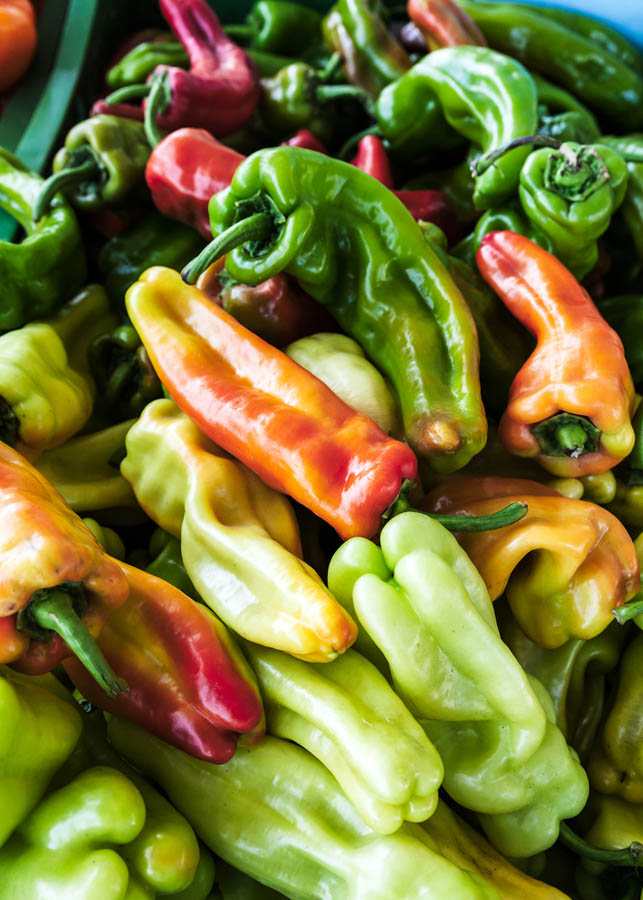Sweet Peppers: Tips for Getting Started

Sweet peppers are wonderful to eat fresh, roasted, fried and made into salsas and relishes. If you are thinking about growing sweet peppers in your garden, here are some tips for getting started.
Sweet peppers can make attractive, colorful additions to your garden and are generally less vulnerable to pests and diseases than many other common garden vegetables. Peppers thrive in a long warm-but-not-hot growing season and, even more than other commonly grown Solanums such as tomatoes and eggplants, fertile soil. Clay soils and extreme heat can make growing sweet peppers, especially the large bell-type sweet peppers, a challenge. The typical gardener may plant sweet bell peppers with anticipation only to harvest 1 to 3 small pepper fruits with thin skin after a summer of frequent watering and hard work. Beginning gardeners are more likely to be successful growing hot peppers which are generally less demanding and require less water and fertility. For intermediate gardeners who want to grow sweet peppers, GardenZeus recommends starting with non-bell-type hybrids and moving to non-bell type heirlooms and bell-type hybrids. Advanced gardeners who are willing to provide the exceptional fertility required of bell-type varieties can take advantage of the entire array of bell-type seeds available.
To be successful with growing sweet peppers, especially the large bell varieties, home gardeners will have to work to provide very fertile soil to encourage fruit production and a strong, large, healthy canopy early in the growing season to protect fruits from sunburn. To provide fertile soil, gardeners will have to provide significant fertility inputs in the form of imported soil in raised beds or other significant soil amendments. In addition to fertile soil, gardeners must work to produce a strong plant canopy by providing ample water, good drainage and adequate nitrogen. Proper growth is most important for young plants; without proper care, young peppers will grow slowly, and may not recover before producing a premature crop of fruit.
If you are new to growing sweet peppers, purchase transplants for the first few seasons; pepper seeds are notoriously slow to germinate and young peppers are sensitive and slow growing. More advanced gardeners can dazzle their taste buds with the huge array of varieties available when growing heirlooms and open-pollinated seeds.
Start seeds indoors 8 to 10 weeks before the date you intend to set peppers in the garden, in time to develop strong, robust seedlings. Peppers can be transplanted in the garden 2 to 3 weeks after the soil temperature has risen to at least 65°F.
If planning to eat peppers fresh, 1 to 2 plants of each variety are sufficient for the household.
GardenZeus has comprehensive growing information by plant and zip code. To get started, enter your zip code here.
Other articles of interest:
Sweet Pepper Varieties: Colors, Flavors and Growing Characteristics